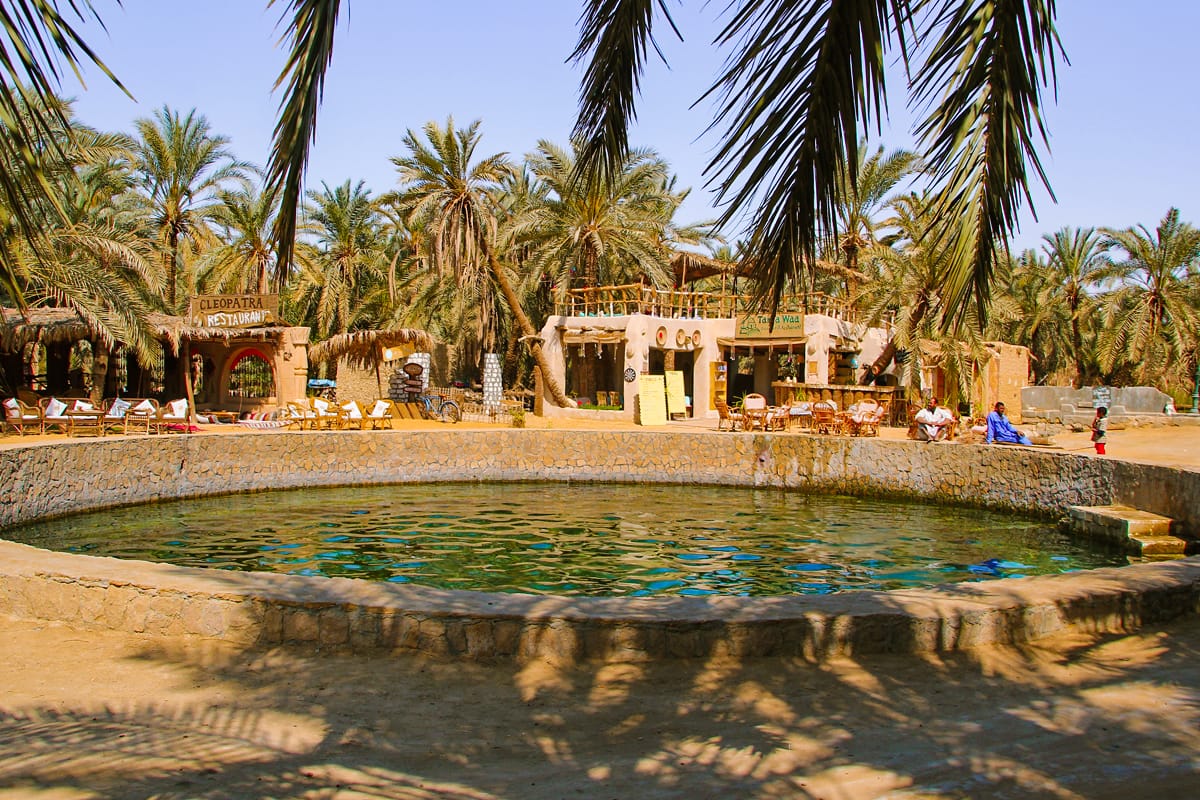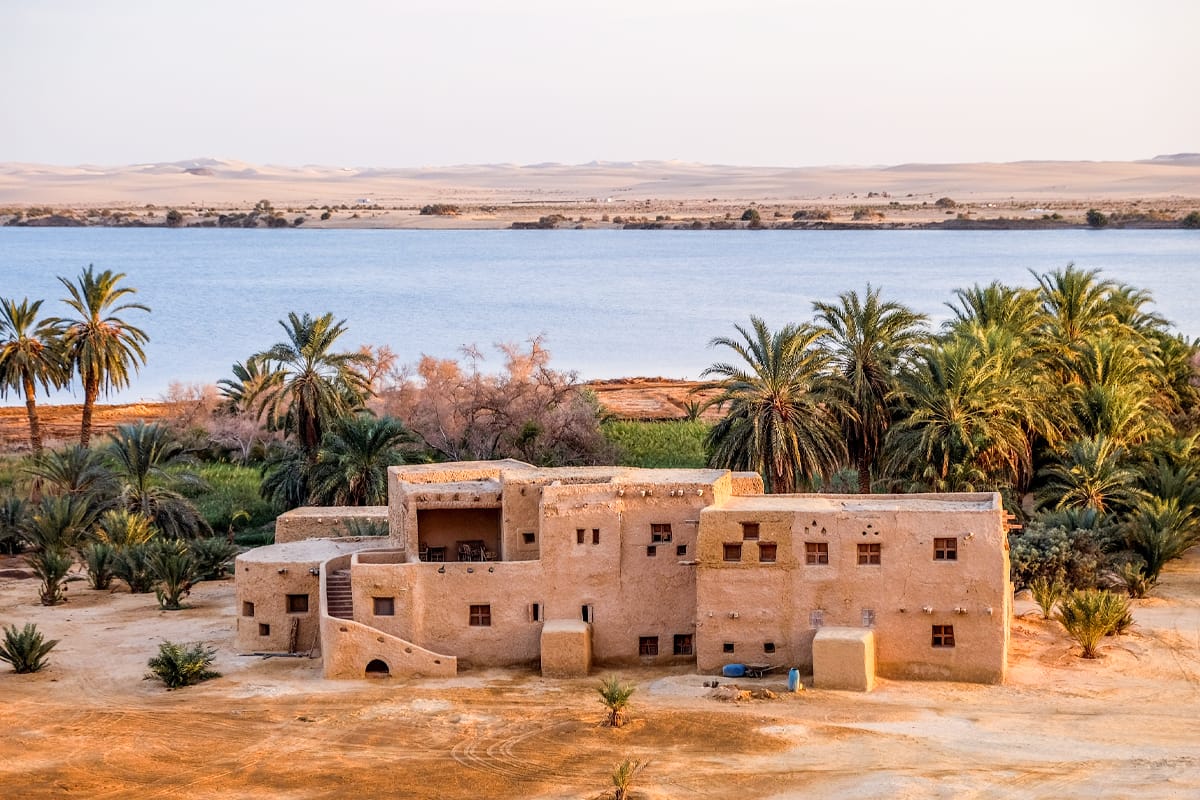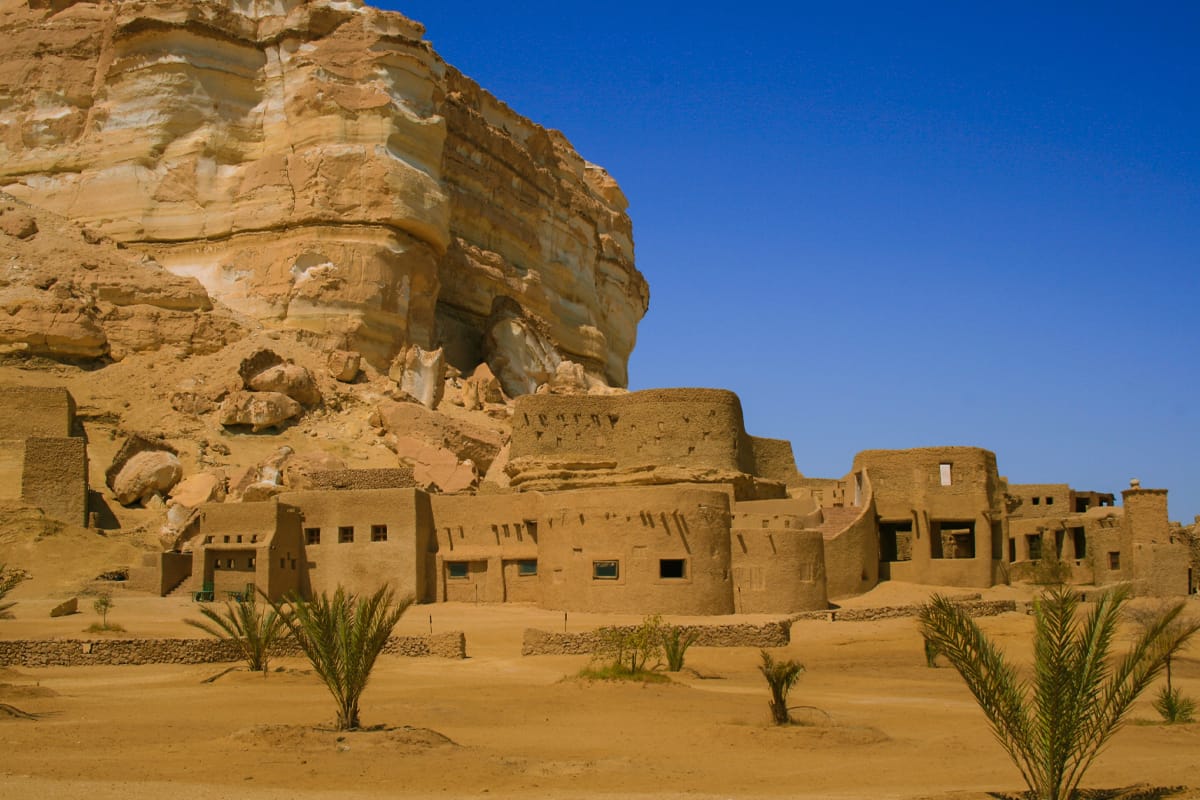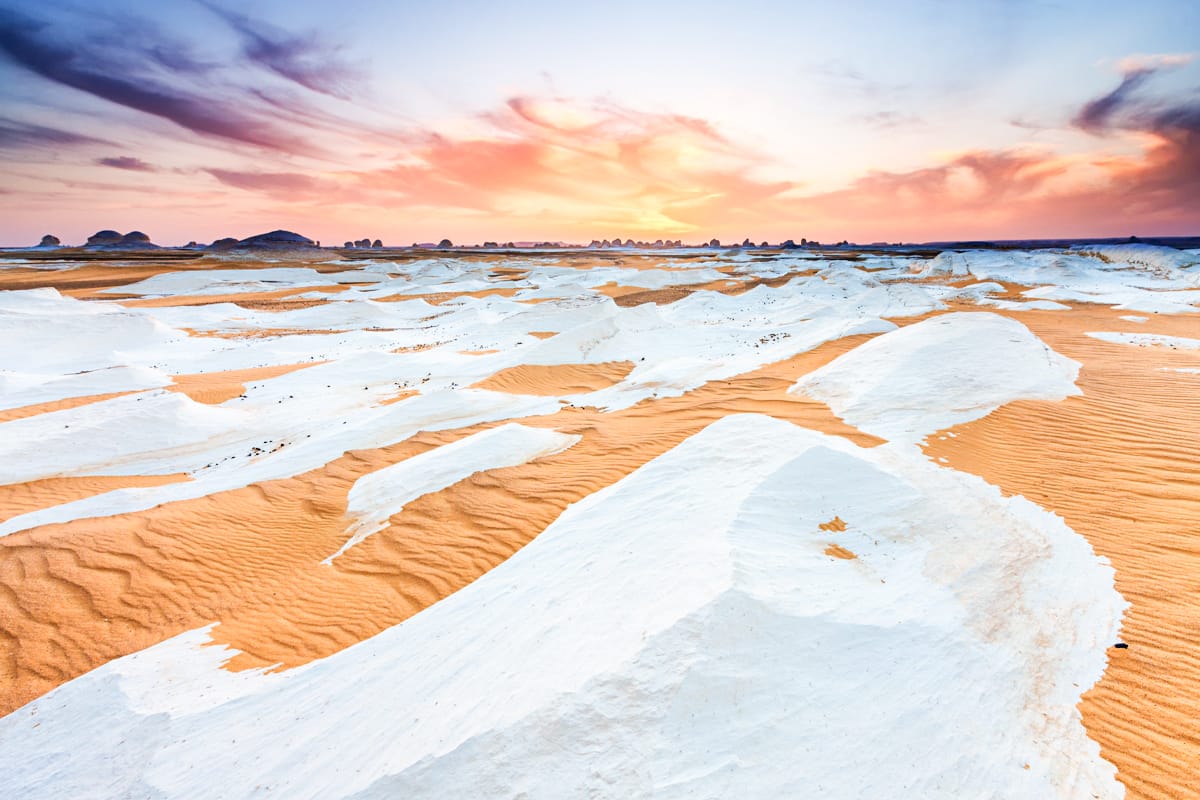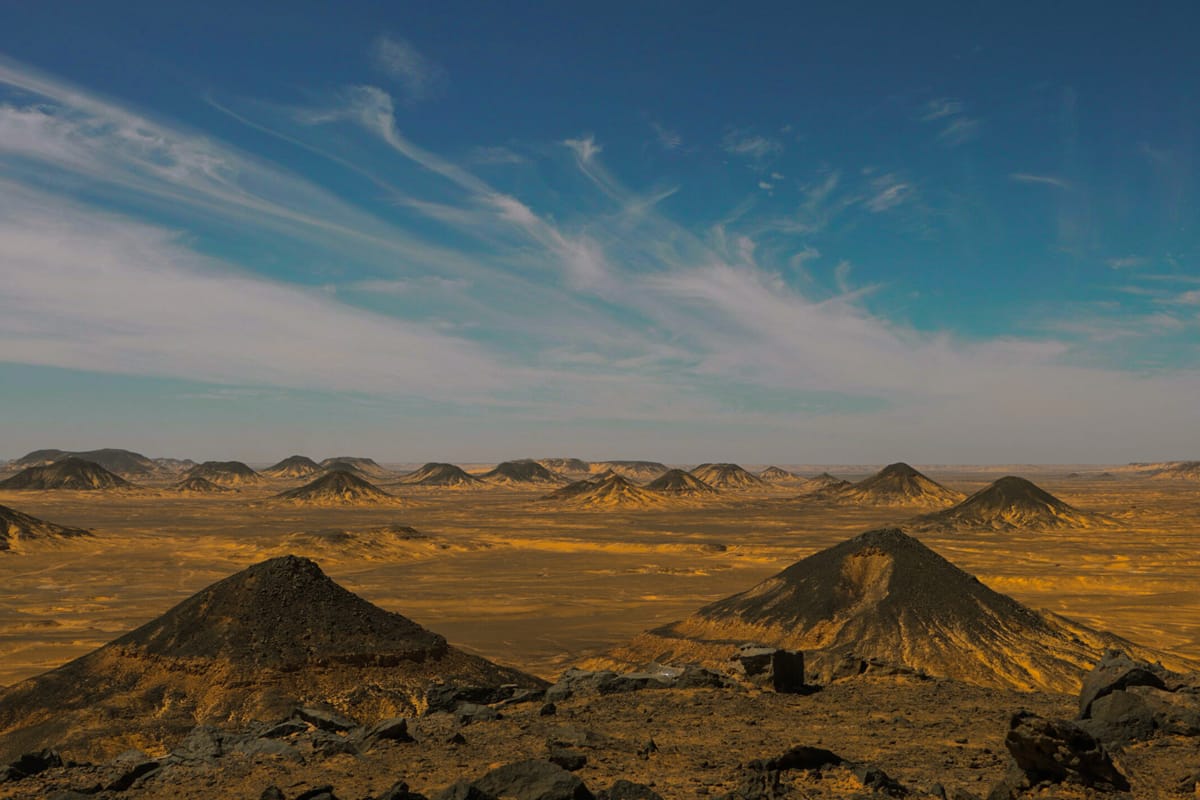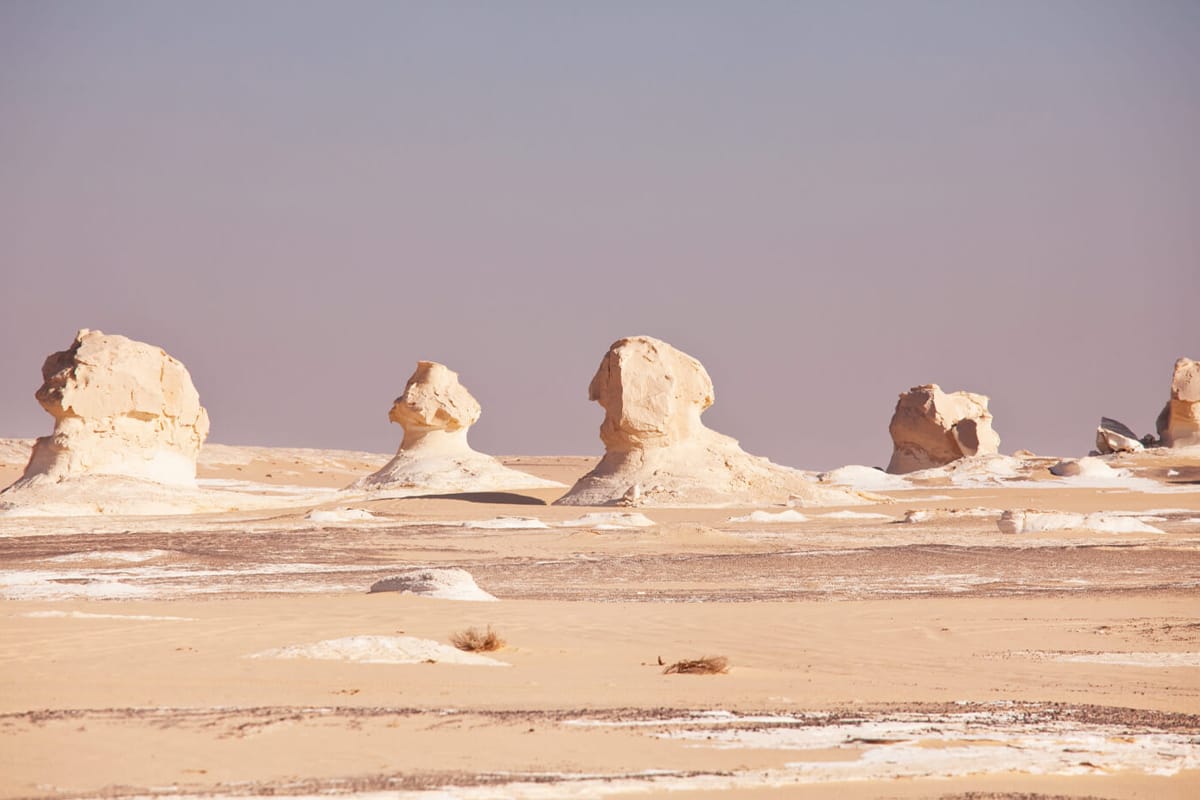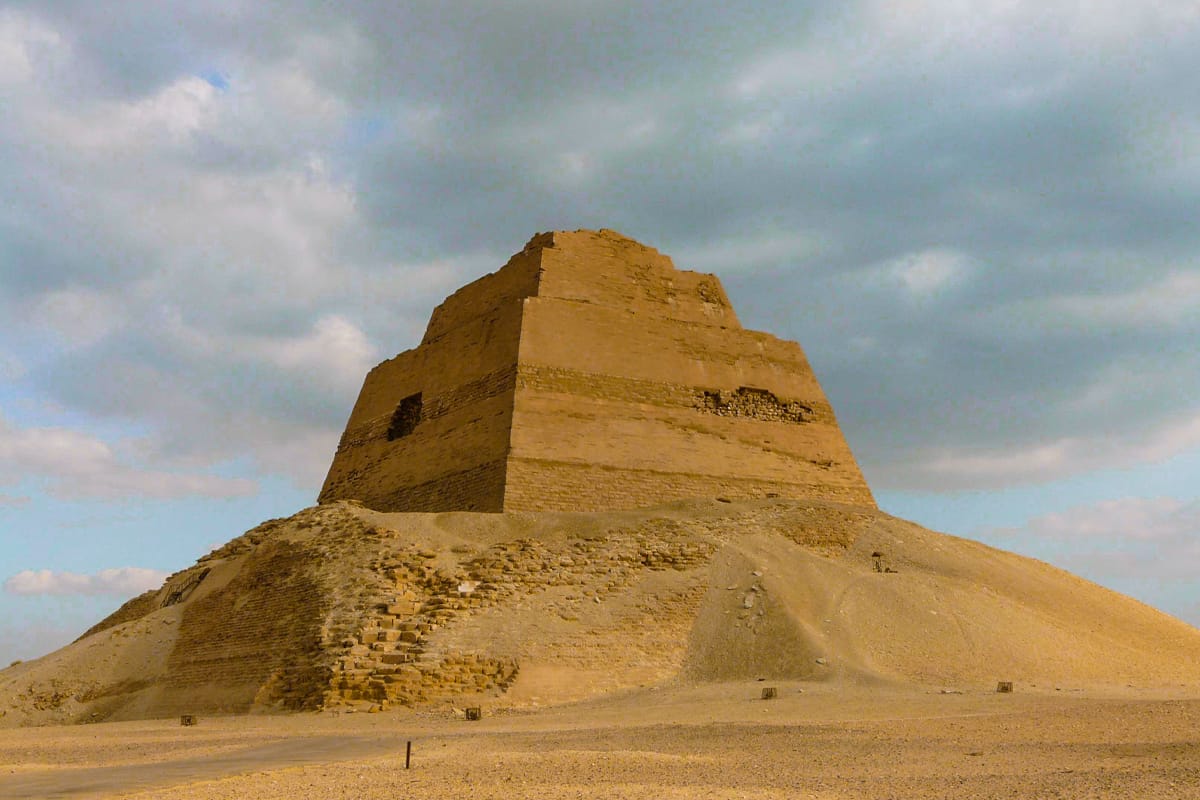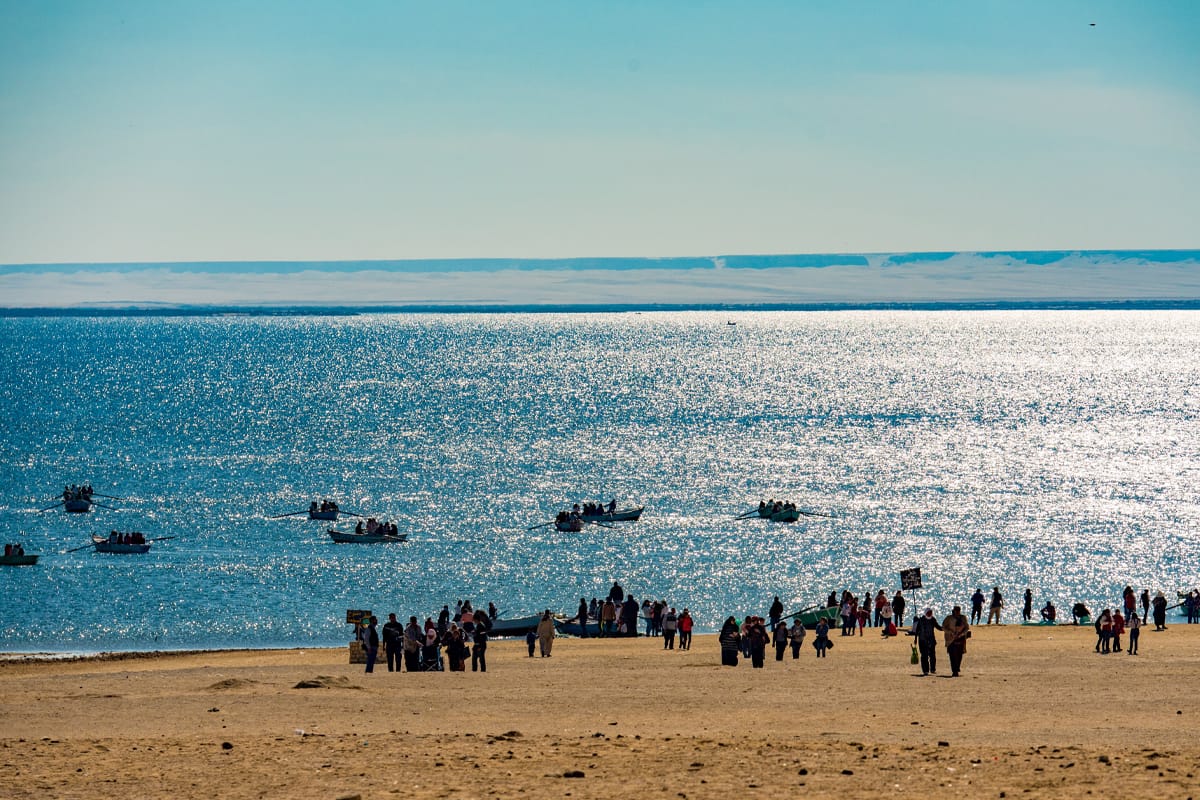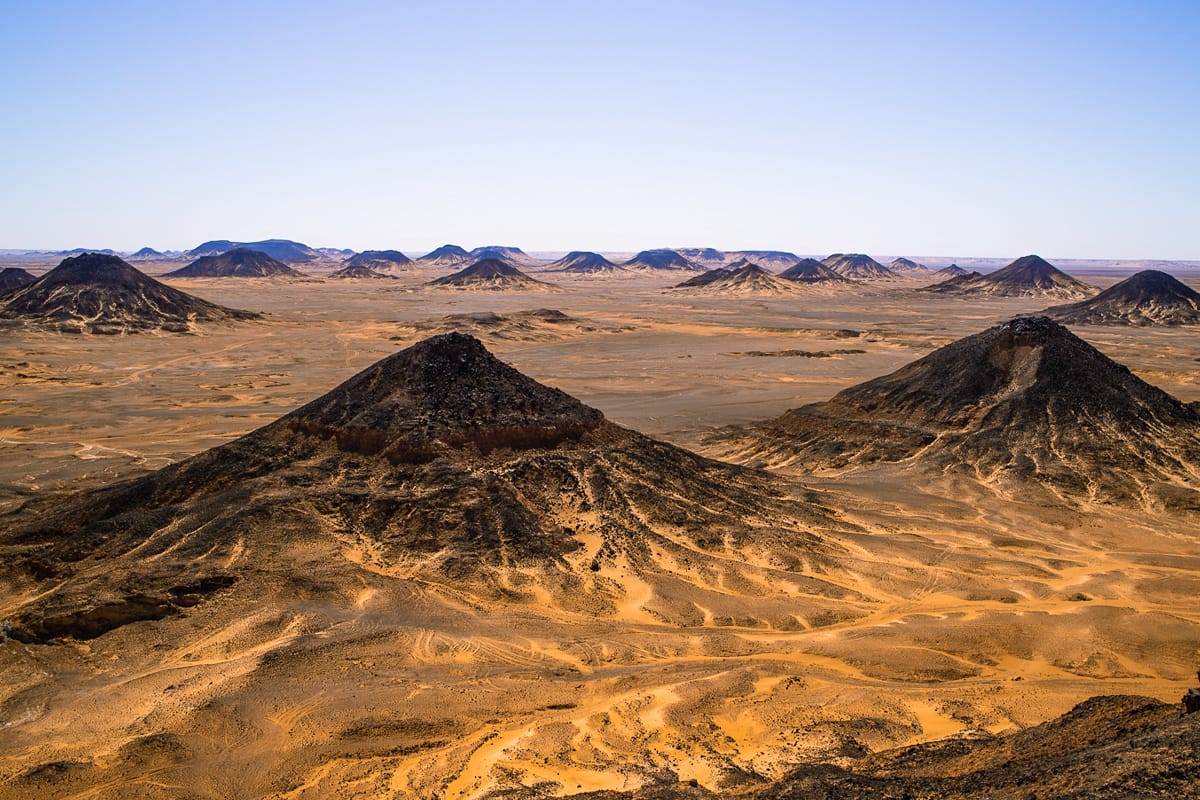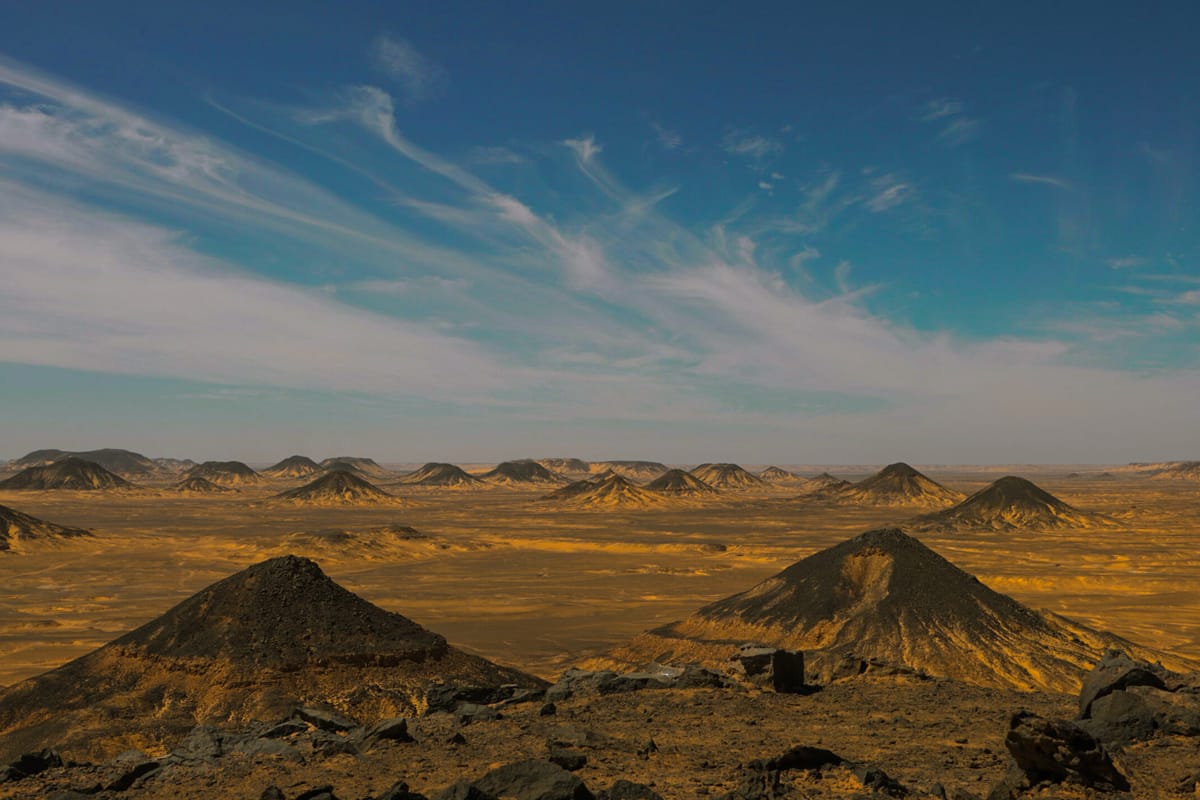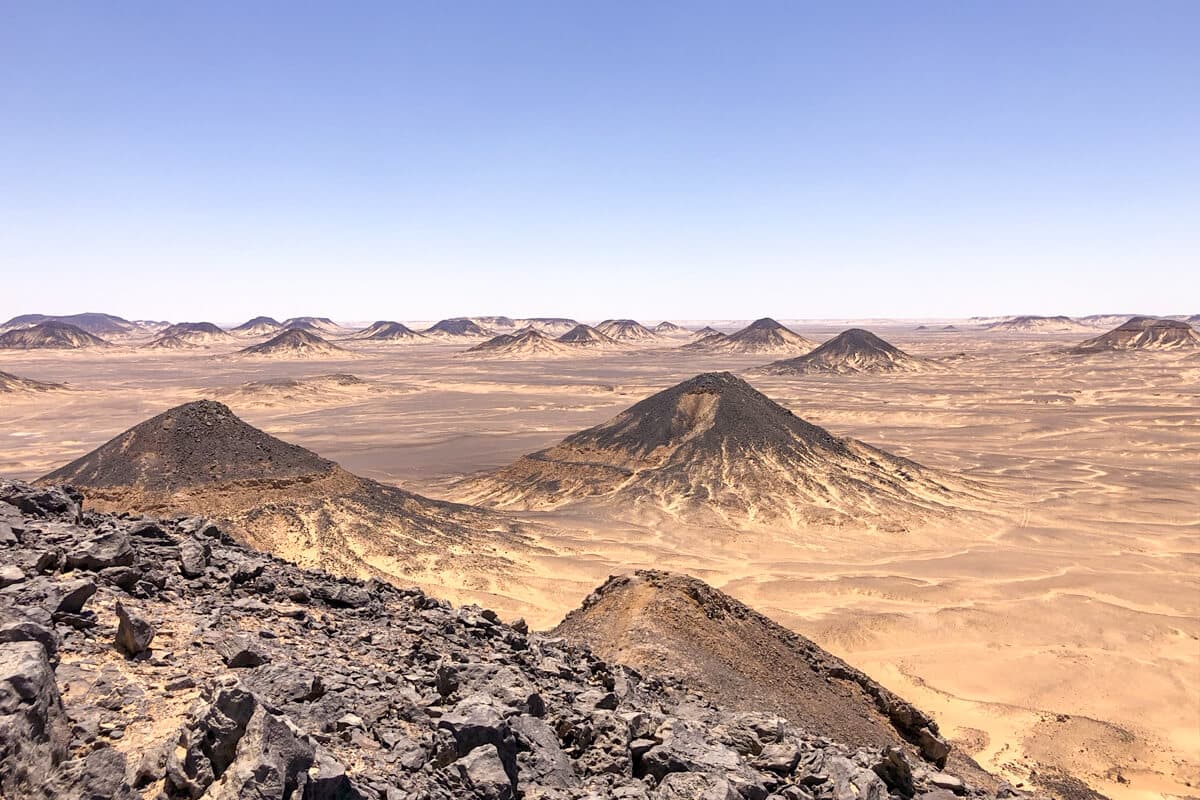Whale Valley, known as Wadi Al-Hitan, is a mesmerizing geological site in the Fayoum Oasis. This unique location holds immense significance as a UNESCO World Heritage Site and offers a glimpse into a bygone era. What makes Whale Valley extraordinary is its abundant collection of prehistoric fossils dating back over 40 million years, belonging to the ancient marine creatures that once inhabited these lands.
Whale Valley stands as a testament to the geological wonders of Egypt, captivating visitors with its geological formations, scenic beauty, and unique blend of history and nature. It offers an extraordinary opportunity to immerse oneself in the remnants of an ancient world, providing a remarkable window into Earth’s rich natural history. Whether you are a paleontology enthusiast, a nature lover, or an avid traveler seeking something genuinely awe-inspiring, Whale Valley promises an unforgettable experience that transcends time.
Explanation of the geological features of Whale Valley
Whale Valley boasts a captivating array of unique geological features, making it a geological marvel. One of the most prominent features is the presence of ancient limestone and sedimentary rocks, which form the foundation of this great site. These rocks witness the ancient Tethys Sea that once covered the region.
Striking cliffs, eroded rock formations, and fossil-rich layers characterize the landscape of Whale Valley. The cliffs, sculpted by wind and water over millions of years, showcase intricate patterns and textures, adding to the site’s allure. These geological formations provide a stunning backdrop for the countless fossil remains embedded within them.
Description of how it was formed over millions of years
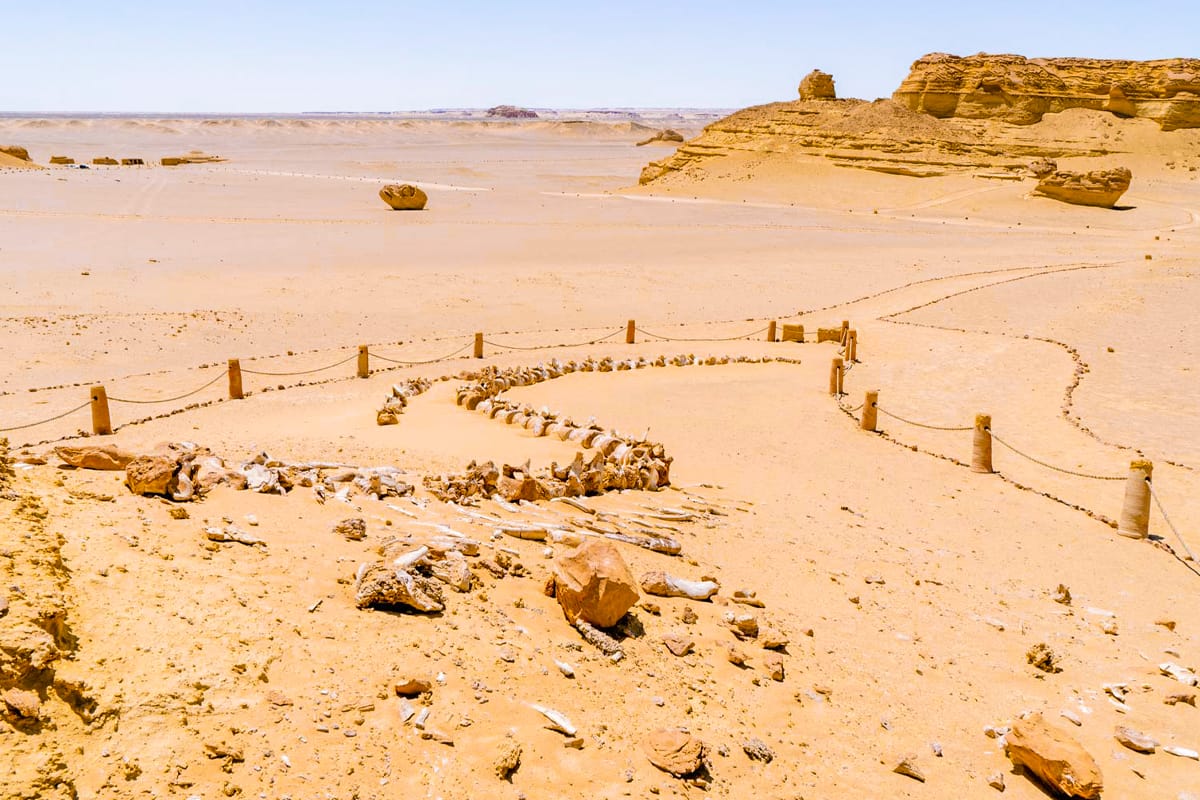
Whale Valley’s formation is a testament to the dynamic forces that have shaped our planet over millions of years. It all began during the late Eocene period, around 40 to 45 million years ago when the area was submerged beneath the ancient Tethys Sea.
As the sea gradually receded, the sediments and marine life that accumulated over time were exposed. The geological processes of erosion and weathering sculpted the exposed layers, revealing the remarkable fossils hidden beneath the surface.
The fossils found in Whale Valley primarily belong to early whales and other marine creatures such as sharks, sea turtles, and fish. These fossils provide evidence of the evolution and adaptation of these animals from their land-dwelling ancestors to fully aquatic beings.
The deposition of sediment and the subsequent fossilization occurred through a combination of factors, including sedimentation from rivers, volcanic activity, and changes in sea level. Over millions of years, the layers of sediment gradually compacted and solidified, preserving the fossilized remains within them.
Today, the geological landscape of Whale Valley stands as a testament to the immense changes our planet has undergone. It offers a captivating window into the ancient seas and the extraordinary creatures that once inhabited them, allowing us to piece together the puzzle of Earth’s geological and biological history.
Prehistoric Fossils and Jurassic Heritage
Highlights of the remarkable prehistoric fossils found in Whale Valley:
Whale Valley is renowned for its remarkable collection of prehistoric fossils, which provide a captivating glimpse into the ancient marine life that thrived in the region. Here are some of the highlights of the fossils found in Whale Valley:
- Early Whales: The site is famous for its exceptionally preserved whale fossils, including the skeletons of early archaeocetes (whale ancestors). These fossils offer valuable insights into the evolutionary journey of whales from land to sea.
- Shark Teeth: Whale Valley is home to a diverse array of shark teeth fossils, providing evidence of the rich marine ecosystem that existed millions of years ago. These teeth provide clues about the diversity and behavior of prehistoric sharks.
- Sea Turtles: Fossilized remains of sea turtles have been discovered in Whale Valley, showcasing the presence of these ancient reptiles in the region during the late Eocene period.
- Fish Fossils: Numerous fossils have been unearthed in Whale Valley, representing a wide range of species that inhabited the prehistoric seas. These fossils offer insights into the biodiversity and ecological dynamics of the ancient marine environment.
Explanation of the area’s significance as a Jurassic heritage site:
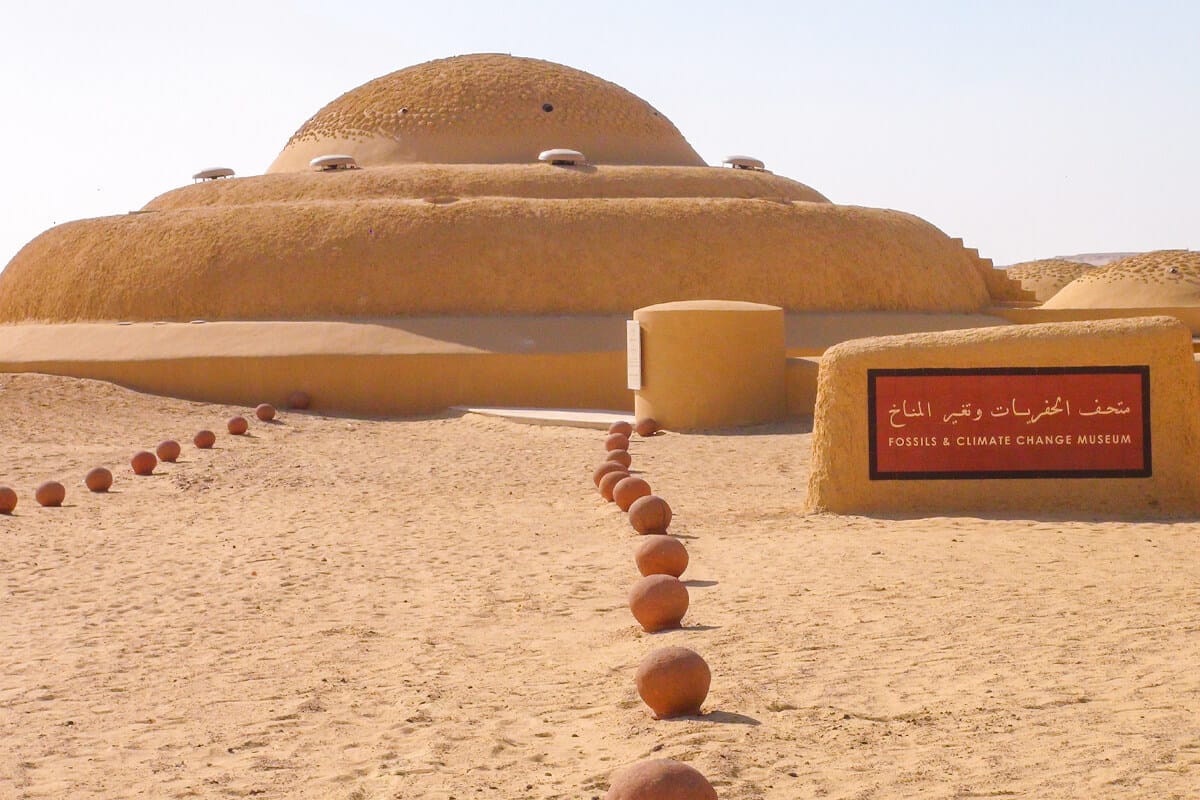
Although Whale Valley is not directly from the Jurassic period, its significance as a heritage site lies in its ability to provide evidence of the transition from the land-dwelling ancestors of whales to fully aquatic creatures during the late Eocene epoch, which followed the Jurassic period.
The presence of exceptionally preserved whale fossils in Whale Valley sheds light on a crucial stage in the evolution of these magnificent marine mammals. It showcases the anatomical adaptations and behavioral changes that occurred as whales transitioned from life on land to life in the sea.
By studying the fossils found in Whale Valley, scientists have been able to piece together the evolutionary history of whales, uncovering how these creatures adapted to the marine environment and eventually became the magnificent beings we know today.
Whale Valley’s Jurassic heritage status recognizes the site’s contribution to our understanding of Earth’s natural history. It serves as a living laboratory where paleontologists and researchers can delve into the mysteries of the past, enriching our knowledge of the evolution of life on our planet. The site’s significance extends beyond its geological and paleontological value, captivating visitors and inspiring a sense of wonder and awe for the ancient creatures that once roamed these now-arid lands.
Biodiversity and Ecosystem
Discussion of the diverse plant and animal life in Whale Valley:
Whale Valley is a haven for paleontologists and history enthusiasts and supports a surprising diversity of plant and animal life. Despite the arid conditions of the Western Desert, several species have managed to adapt and thrive in this unique ecosystem.
- Desert Flora: Various desert-adapted plant species have found a home in Whale Valley. These include hardy shrubs, drought-resistant grasses, and endemic desert flora that have evolved to withstand the harsh desert climate. These plants are vital in stabilizing the soil, preventing erosion, and providing habitats for other organisms.
- Avian Species: Several bird species can be found in Whale Valley, including raptors such as falcons and eagles that soar above the cliffs. Migratory birds also make seasonal stopovers in the area, taking advantage of its resources.
- Reptiles and Invertebrates: The desert ecosystem of Whale Valley supports a range of reptiles, including lizards, geckos, and snakes. Invertebrates like beetles, scorpions, and spiders have also adapted to survive in this arid environment.
- Rodents and Small Mammals: Despite the harsh conditions, small mammals and rodents have managed to carve out niches in the ecosystem. These include gerbils, jerboas, and desert foxes, which have developed unique adaptations to cope with limited resources.
Importance of preserving the fragile ecosystem:
Preserving the fragile ecosystem of Whale Valley is of paramount importance to maintain its biodiversity and ecological balance. Here’s why:
- Conservation of Endemic Species: Whale Valley may harbor endemic plant and animal species that have adapted specifically to this environment. Preserving the ecosystem ensures the survival of these unique species, safeguarding their genetic diversity and ecological role.
- Ecological Interdependencies: Every organism in an ecosystem plays a crucial role in maintaining the balance of nature. By protecting the ecosystem of Whale Valley, we ensure the continued interactions and interdependencies between plants, animals, and their habitats. Disruptions to this delicate balance could have far-reaching consequences for the entire ecosystem.
- Research and Education: The unique ecosystem of Whale Valley provides a wealth of opportunities for scientific research and education. By preserving the ecosystem, we enable ongoing studies on desert ecology, paleontology, and climate change, contributing to our understanding of the natural world and informing conservation efforts beyond Whale Valley.
- Sustainable Tourism: Whale Valley’s ecosystem also serves as a draw for tourism. By preserving the fragile ecosystem, we can promote responsible and sustainable tourism practices that minimize negative environmental impacts while allowing visitors to appreciate and learn from its natural wonders.
Exploration and Activities

Hiking enthusiasts can explore the trails that wind through the Valley, offering breathtaking views of the unique rock formations and opportunities to spot wildlife along the way. Remember to carry sufficient water, wear appropriate footwear, and adhere to any safety guidelines provided.
Whale Valley’s diverse ecosystem provides an excellent opportunity for wildlife observation. Watch for birds, reptiles, and small mammals adapted to the desert environment. Remember to maintain a respectful distance and avoid disturbing the animals or their habitats.
Photography enthusiasts will be captivated by the stunning landscapes and unique geological features of Whale Valley. Capture the essence of this ancient realm by experimenting with different lighting conditions, perspectives, and compositions.
Whether you embark on a guided tour, hike the trails, observe wildlife, or document the beauty through photography, Whale Valley promises an unforgettable experience that allows you to connect with nature and delve into the mysteries of our planet’s past.
Best Time to Visit Whale Valley
- Explanation of the ideal seasons for visiting Whale Valley: The perfect time to visit Whale Valley is during the cooler months, typically from October to April. During this period, the temperatures are more moderate, making outdoor activities more enjoyable. The weather is generally dry, allowing for clear visibility and comfortable site exploration.
- Consideration of weather, wildlife sightings, and visitor numbers: Visiting during the cooler months ensures a more pleasant climate and increases the chances of wildlife sightings. Many animals are more active during this time, and bird migrations can be observed. Additionally, visiting outside of peak tourist season (around December and January) helps avoid crowds, allowing for a more immersive and tranquil experience in the remarkable surroundings of Whale Valley.
For Egypt travelers seeking a one-of-a-kind experience, Whale Valley beckons with its captivating blend of history, nature, and adventure. It invites you to step back in time and discover the wonders that lie within this UNESCO World Heritage Site.
Plan your journey to Whale Valley today and embark on a remarkable adventure through time. Explore the fossils, marvel at the geological formations, hike the trails, and witness the thriving desert ecosystem. Let Whale Valley leave an indelible impression, connecting you to the ancient past and inspiring a deep appreciation for the wonders of our planet.
Embark on an unforgettable Egypt vacation and discover the wonders of Whale Valley, along with other captivating attractions. Egypt vacation packages perfectly blend history, culture, and natural beauty. Immerse yourself in the ancient wonders of Cairo, marvel at the iconic pyramids of Giza, and explore the fascinating treasures of Luxor and Aswan. And every trip to Egypt is complete with a visit to Whale Valley. Join a guided day tour of this UNESCO World Heritage Site and witness the fossilized remains of early whales and other prehistoric creatures. Combine it with visits to the majestic temples of Karnak and Luxor, the tranquil Nile River, or the vibrant markets of Cairo. Experience the allure of Egypt with meticulously crafted vacation packages and day tours that bring the country’s rich heritage and stunning landscapes to life.



